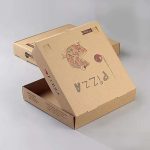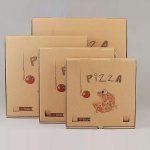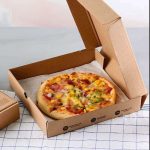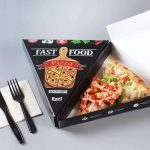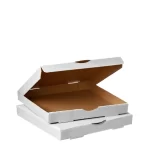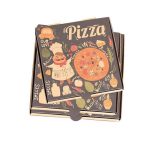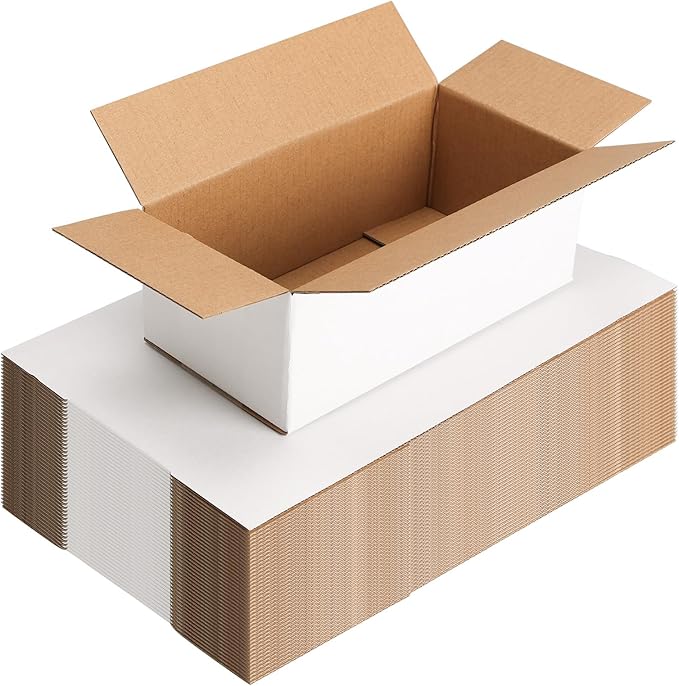Custom Food Packaging Boxes
Corrugated boxes are also very popular in the food packaging industry. On the one hand, due to the corrugated material, the box is relatively strong and can be used to pack food for transportation, ensuring a certain degree of support and not crushing the food; on the other hand, the material is very environmentally friendly and can be recycled. We also provide customers with customized services to meet the requirements of different types of food.
Size
We can make suitable boxes according to the size of the food you want to package. You can directly provide us with the box size you want, or tell us the size of the food, and we will give you size recommendations based on our rich experience.
Corrugated material
- Excellent Protection for Food Products
Shock Resistance: The fluted (corrugated) layer between two flat liners absorbs impacts during transportation, preventing damage to fragile food items like baked goods, glass jars, or fresh produce.
Moisture and Temperature Regulation: Some corrugated materials can be treated with water-resistant coatings to protect against spills or humidity, while insulated variants maintain food temperature for perishables.
Sturdy Structure: The rigid design supports heavy items (e.g., canned goods, bottled beverages) without collapsing, reducing the risk of product deformation or breakage.
- Cost-Effective and Lightweight
Low Production Cost: Corrugated cardboard is cheaper than materials like plastic or metal, making it ideal for large-scale food packaging needs.
Lightweight Design: Reduces shipping costs by minimizing package weight, while still providing robust protection. This is especially beneficial for e-commerce food delivery.
- Customizability and Branding Opportunities
Printable Surfaces: The outer layer can be easily printed with vibrant graphics, logos, nutritional information, or promotional messages to enhance brand visibility and consumer engagement.
Versatile Sizing: Customizable dimensions accommodate various food products, from small snacks to large meal kits, with options for inserts or dividers to organize items.
- Environmental Sustainability
Recyclable and Biodegradable: Corrugated cardboard is made from renewable wood pulp and can be recycled multiple times, aligning with eco-friendly packaging trends.
Reduced Plastic Waste: Replaces single-use plastic containers for certain food items, contributing to global efforts to minimize plastic pollution.
Carbon Footprint: Production of corrugated material consumes less energy compared to synthetic packaging, and it decomposes naturally without harmful residues.
- Convenience and Functionality
Easy Handling and Storage: Stackable design allows efficient warehouse storage and retail display, while die-cut handles or foldable structures enhance consumer usability.
Quick Assembly: Pre-creased designs enable fast packaging in commercial kitchens or food processing facilities, improving operational efficiency.
Visibility Options: Some boxes include transparent windows to showcase the food inside, eliminating the need for additional packaging while attracting buyers.
- Compliance with Food Safety Standards
Food-Grade Coatings: Corrugated boxes can be treated with food-safe linings or barriers to prevent contamination, making them suitable for direct or indirect food contact (e.g., dry goods, snacks).
Hygienic Packaging: The material is non-porous when properly coated, reducing the risk of bacterial growth and meeting industry health regulations.
- Suitability for Diverse Food Applications
Perishable Items: Used for fresh produce, dairy, or meats with insulated layers to maintain cold temperatures during delivery.
Ready-to-Eat Meals: Ideal for takeout or meal kit packaging, with features like microwave-safe coatings (in specific designs) for consumer convenience.
Dry Goods and Snacks: Protects products like cereals, cookies, or pasta from moisture and pests during storage and transit.


